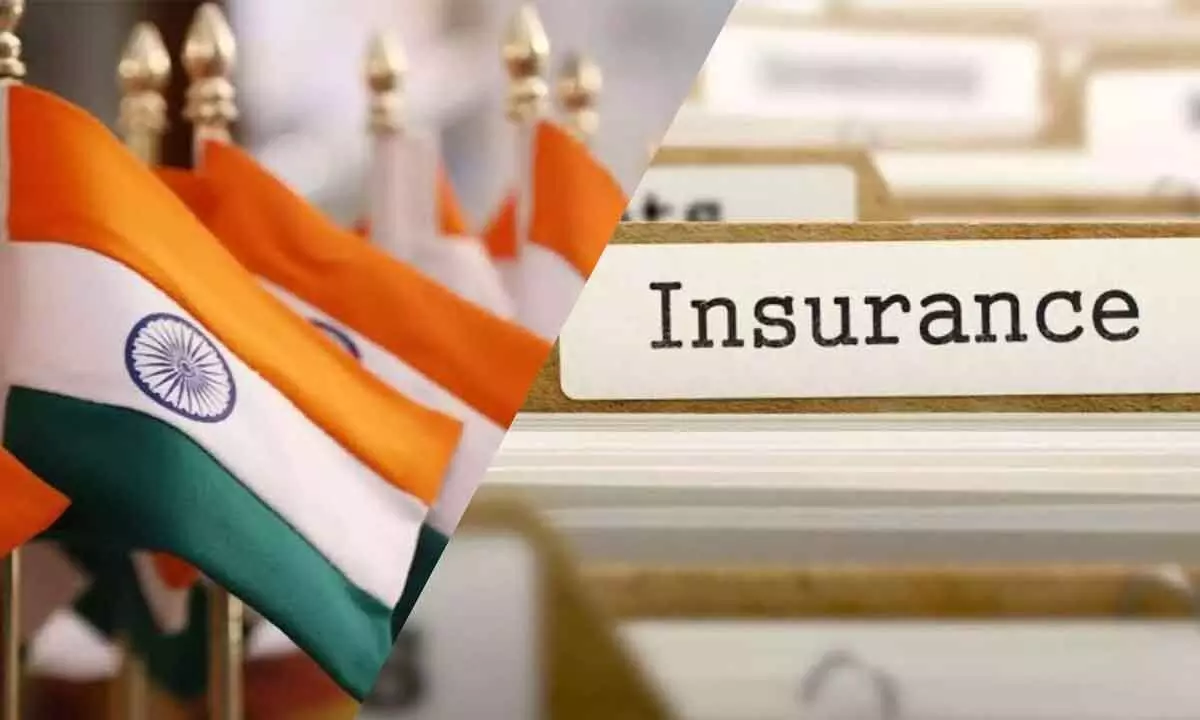India’s insurance sector stuck despite decades of openness
image for illustrative purpose

Visakhapatnam: The recently released IRDA Annual Report 2022-23 debunked the tall claims made by successive governments on FDI in the insurance sector, P Satish, president of South Central Zone Insurance Employees' Federation said.
Insurance Regulatory and Development Authority Bill was enacted in 1999 by facilitating penetration of foreign and private insurance companies in the Indian insurance industry. In 2015, FDI limits in India were enhanced from 26 per cent to 49 per cent and again in 2021 to 74 per cent. At the time of opening up of the life Insurance industry in 1999, then Deputy Prime Minister LK Advani boasted that India will receive $25 billion of FDI in the insurance sector every year. Moreover, the then government parroted that FDI in insurance will enhance employment opportunities, insurance penetration, insurance density and technological upgradation, Satish, who is the vice-president of All India Insurance Employees' Association (AIIEA) told Bizz Buzz on Tuesday. He said though government of India had already allowed 100 per cent FDI in insurance intermediaries and FDI to 74 per cent in insurance, yet the experience has proven that it is not useful for the productive development of the country
He pointed out that the country has received around Rs 2,000 crore FDI in life insurance industry equivalent to $1.5 billion and Rs 5,000 crore in general insurance over a period of 23 years from 2000 to 2023. During the total period, an amount of Rs 3,500 crore FDI only came in the Indian insurance sector, which is a trifle, despite raising FDI limits from 26 per cent to 74 per cent. Moreover, most of the FDI and FIIs have come into India only to indulge in speculative investments and to take over Indian companies through acquisitions and mergers.
Satish observed that even after 23 years of opening up of the insurance sector, the insurance penetration (insurance premium as a percentage of GDP) levels in the life sector has come down from 3.2 per cent to 3 per cent and the same for the non-life insurance sector remained at 1 per cent only. India's overall insurance penetration reduced to 4 per cent in 2022-23 from the level of 4.2 per cent in 2021-22. In 2022-23, the life insurance density increased to 70 from 69 in 2021-22. Whereas, non-life insurance density remained stable. In 2022-23, the insurance density in India increased from 91 in 2021-22 to 92 in 2022-23.
It is obvious that the insurance penetration in India is comparable despite a lesser disposable income of the people whereas the world average is 4 per cent; USA 3.5 per cent, Australia 3.1 per cent, China 2.5 per cent and Brazil 1.5 per cent. The insurance penetration has declined because the private insurance companies are engaged in selling mainly ULIP and big-ticket policies and are concentrating mostly on urban clientele. The argument that FDI will create employment is a rude joke, he said.
The country is now facing the worst employment crisis in its history. No new products have come except ULIPs, which are not considered as conventional insurance products.
Hence, the argument of the government that by promoting the FDI in this country, insurance penetration employment opportunities will increase is not tenable.
Moreover, no new technology has come for the benefit of customer servicing. In fact, LIC in a systematic manner upgraded its technology from time to time keeping in mind the customer expectations and requirements. Today it is recognised as the number one technology user in the country, he stated and demanded doing away with levying of GST on insurance and initiation of measures to strengthen LIC in the long-term interests of the country.

